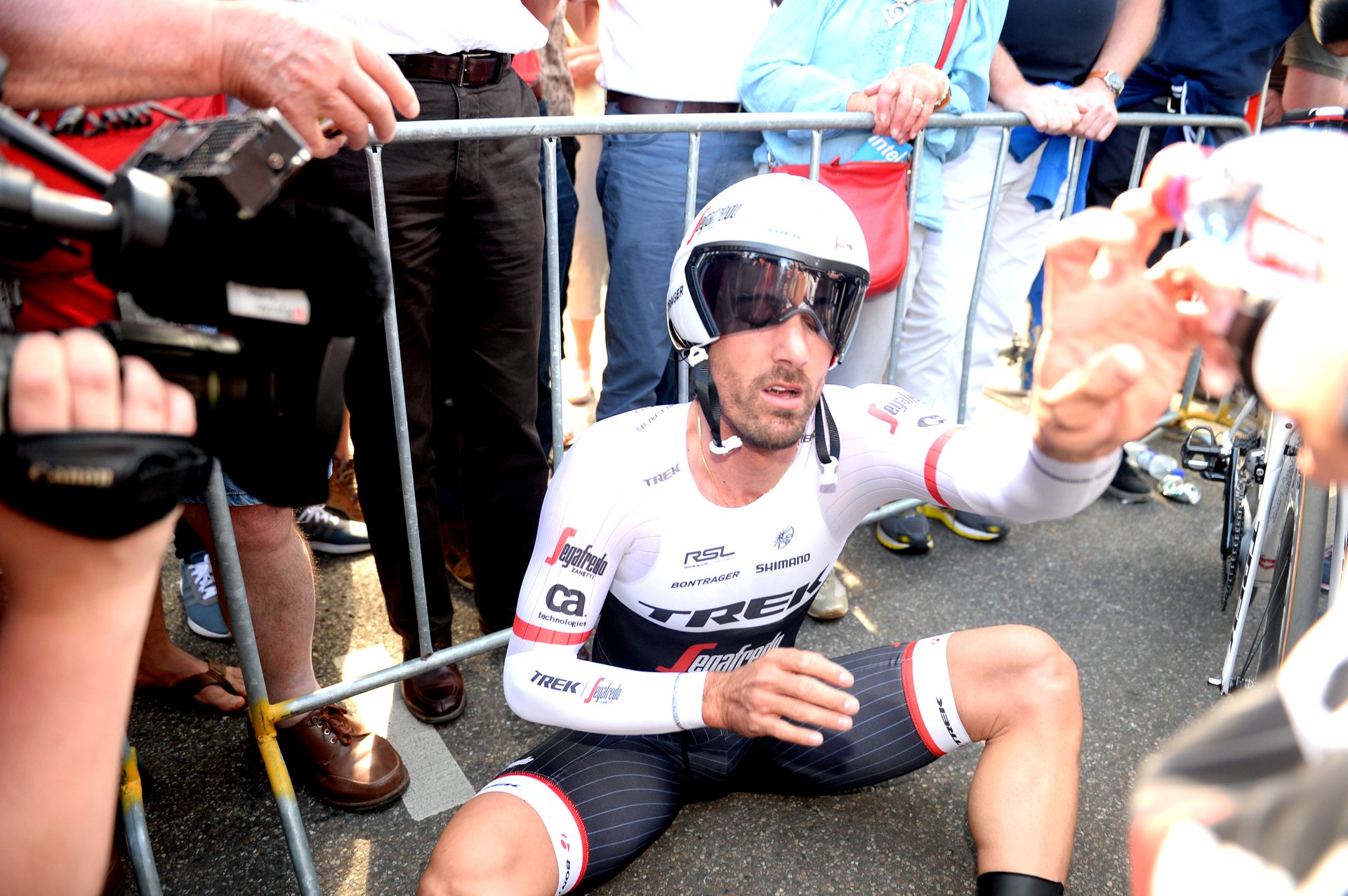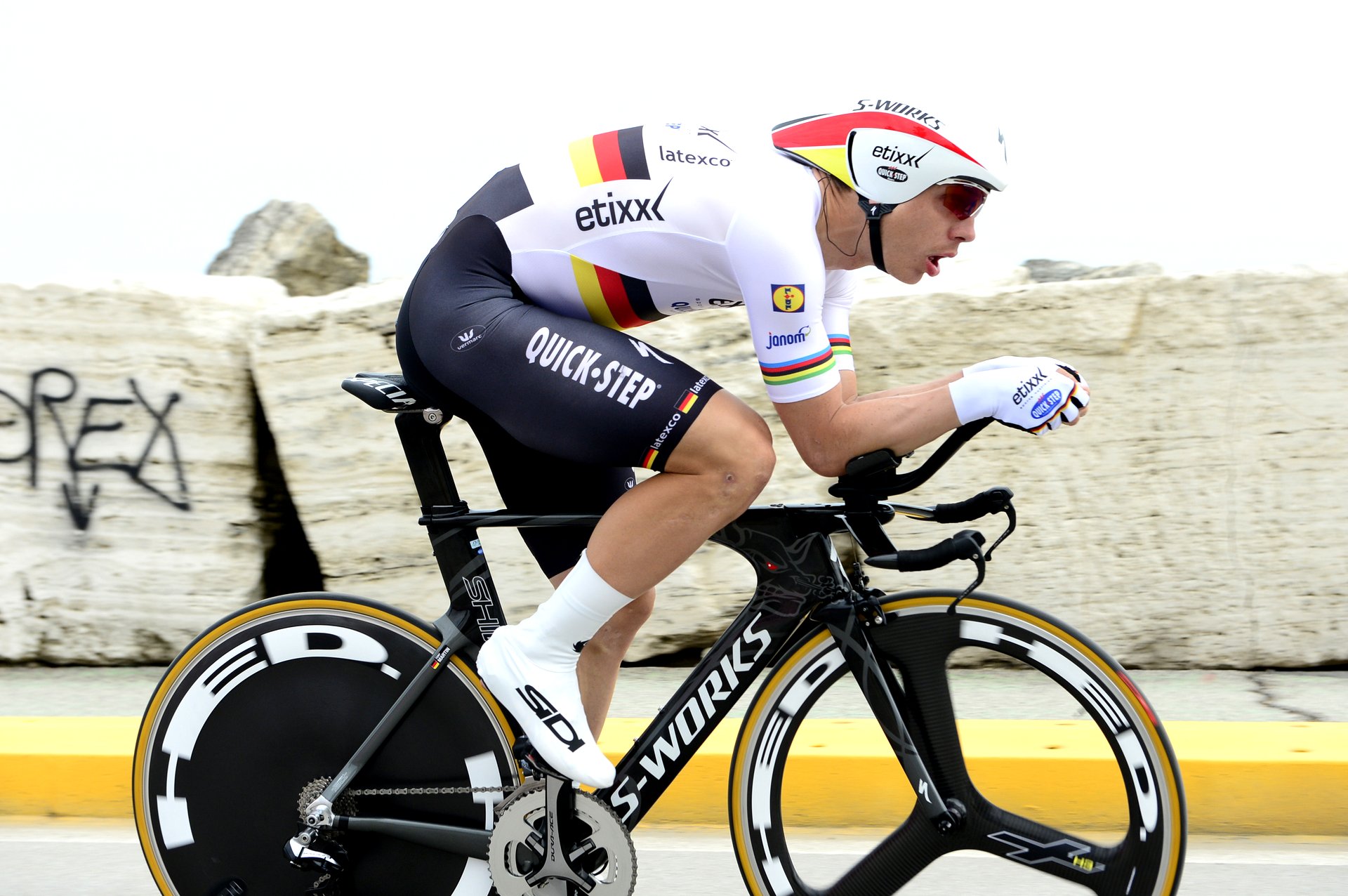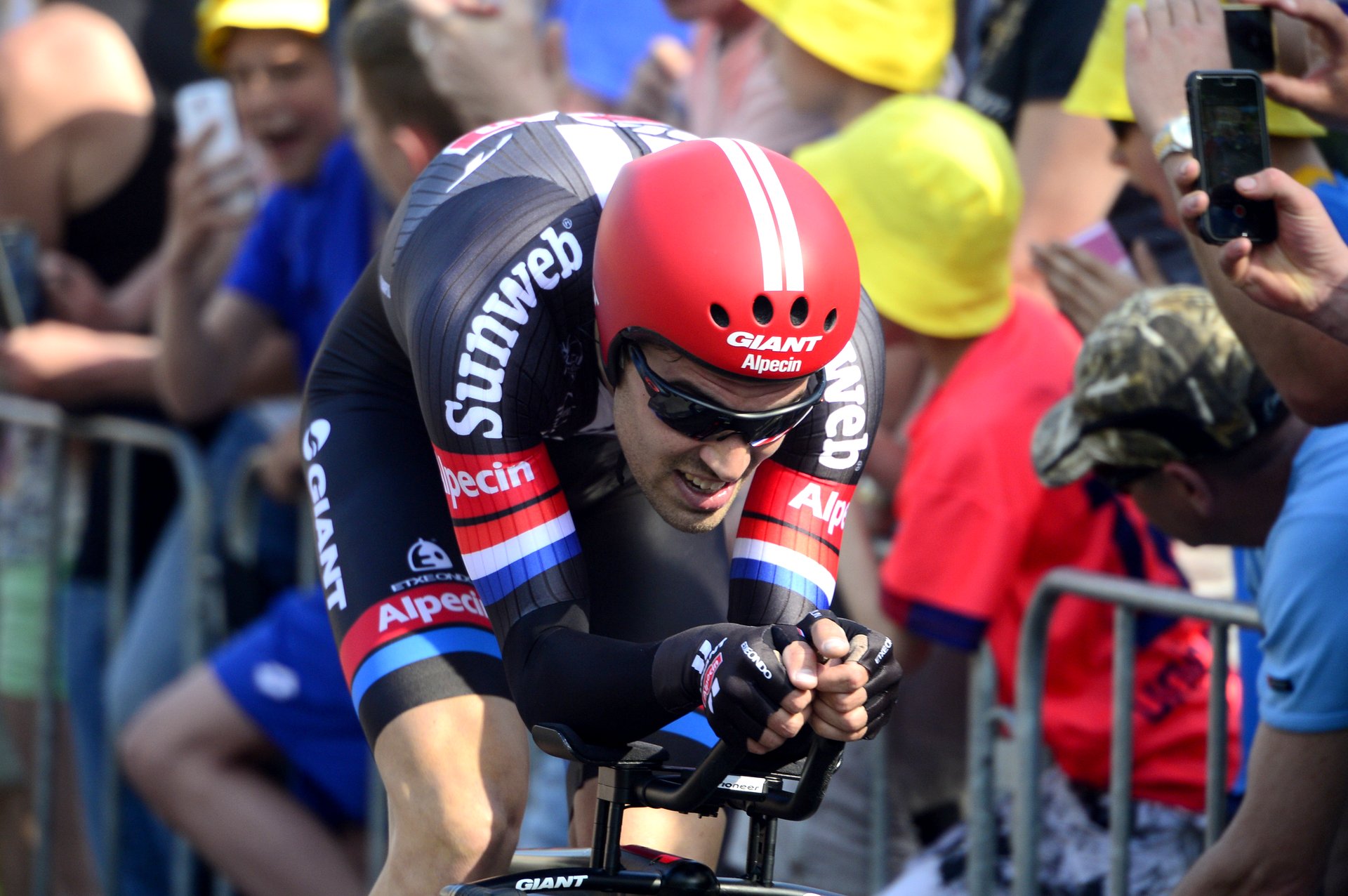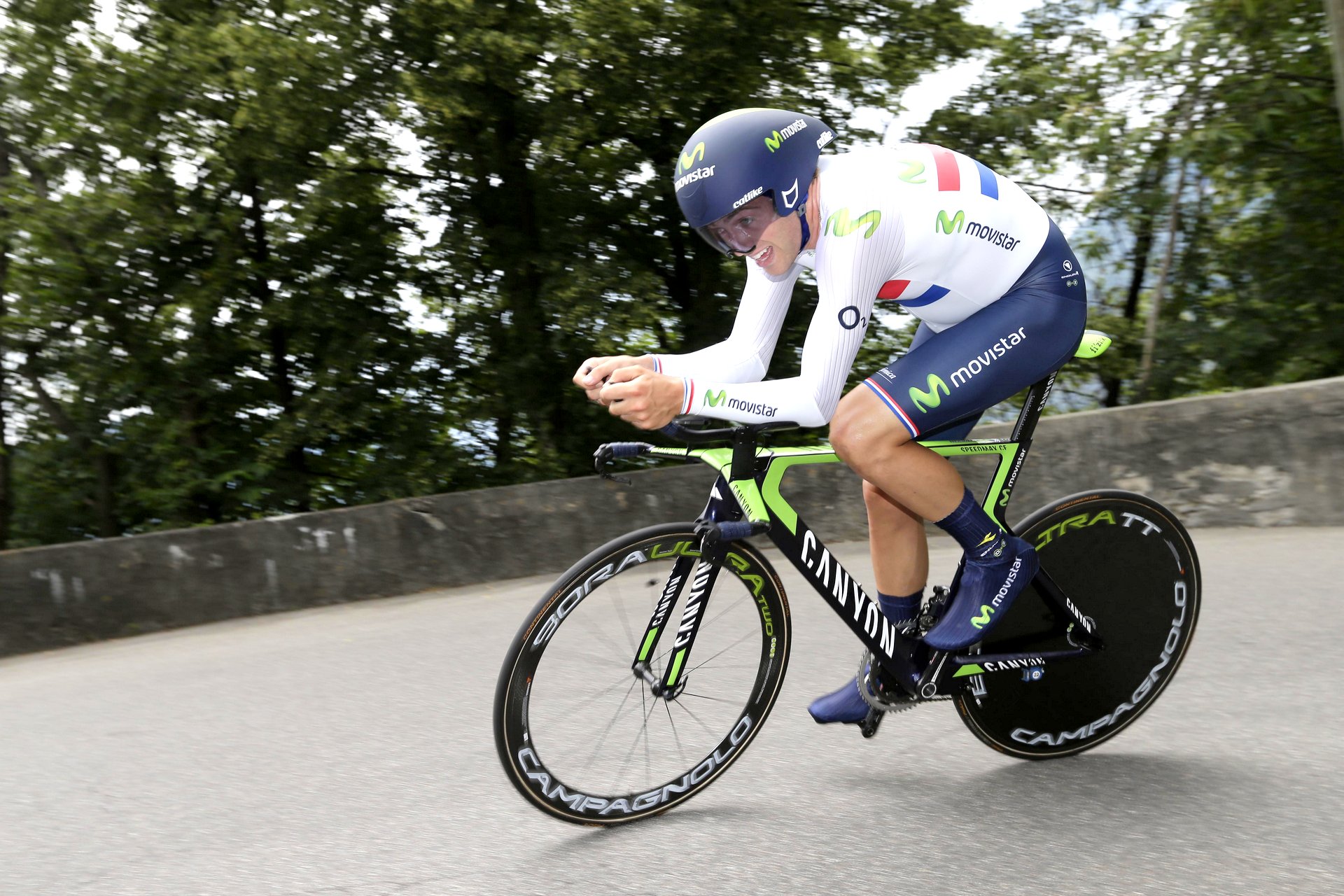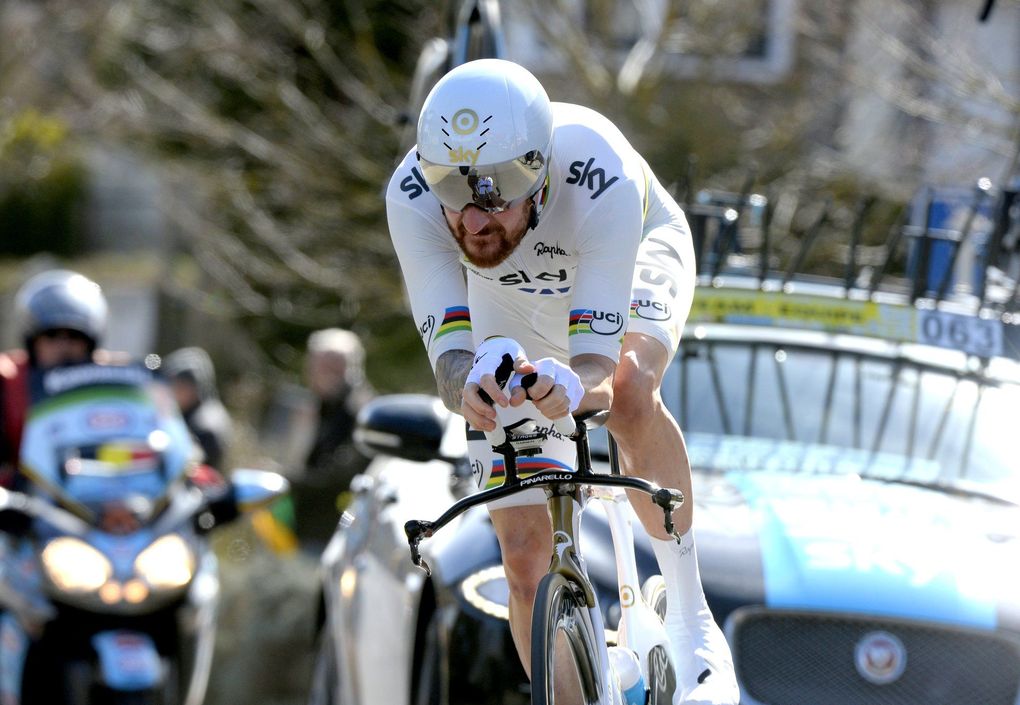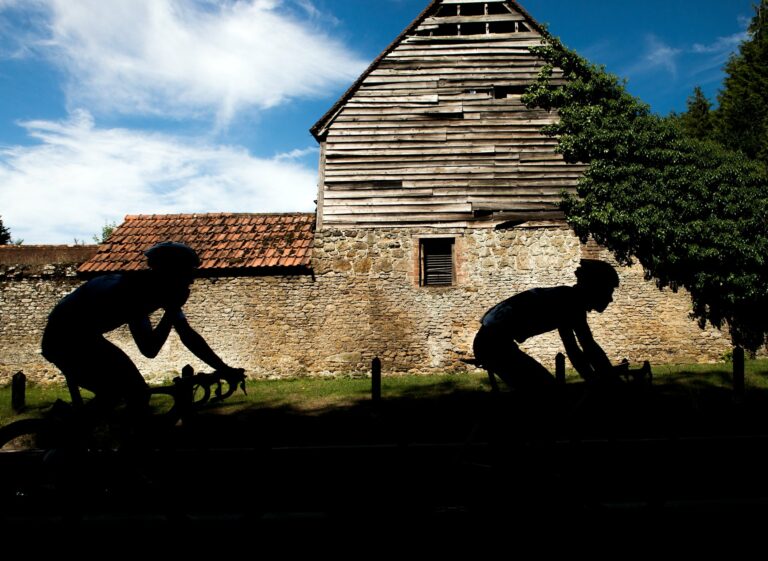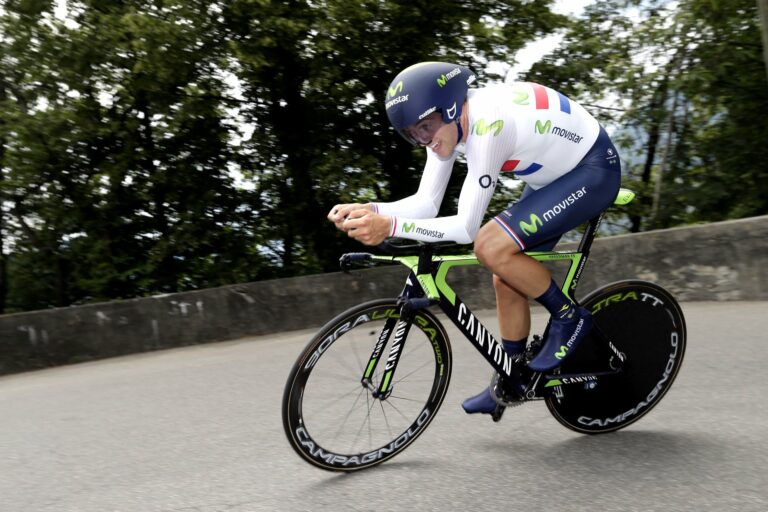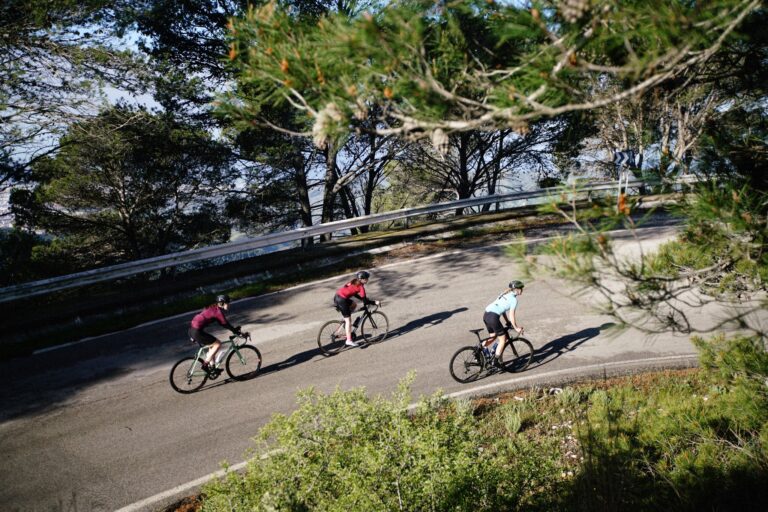Time trialing is the ultimate way to test yourself on the bike – it’s you against the clock, with no hiding place. No team tactics, no bunch sprint, no excuses. It’s why the time trial is called ‘the race of truth’.
Time trialing is all about sustainable power. The more power a rider can put out and maintain over a period of time – or, more specifically, the time it takes to complete the time trial – the higher the speed they can sustain.
– A beginner’s guide to aerodynamics and cycling –
However, it’s not quite as simple as that – aerodynamics have an important part to play in a time trial. Having all the power in the world is no use if you sit up like a sail in the wind. Likewise. you can be as aerodynamic as you want but if you can’t put out any power in that position then you won’t go quickly. Riders like Sir Bradley Wiggins and Tony Martin – two of the vest best time trialists in the world – are able to sustain a very high power output in a very aerodynamic position.
